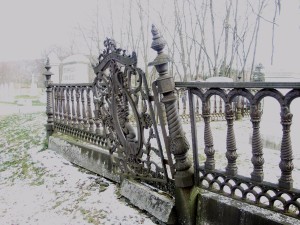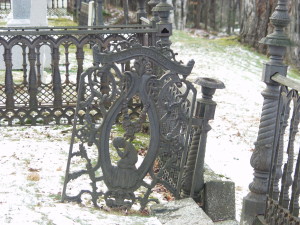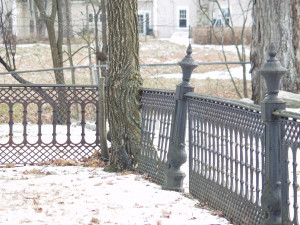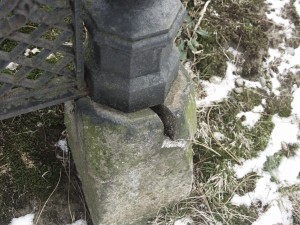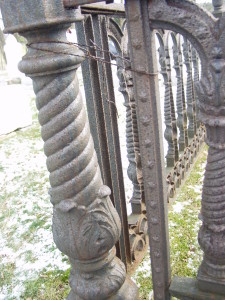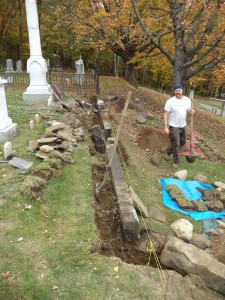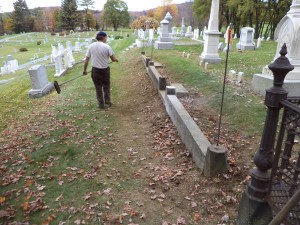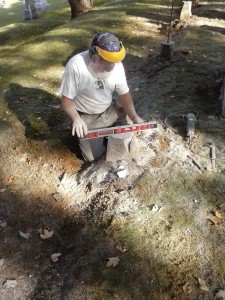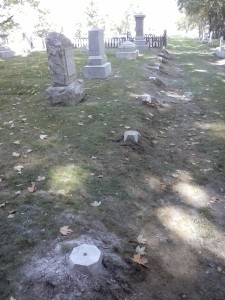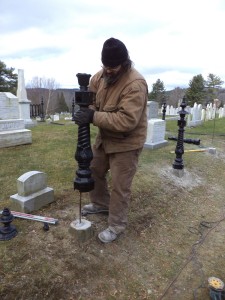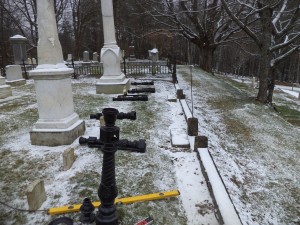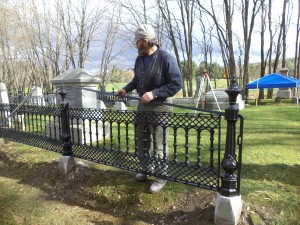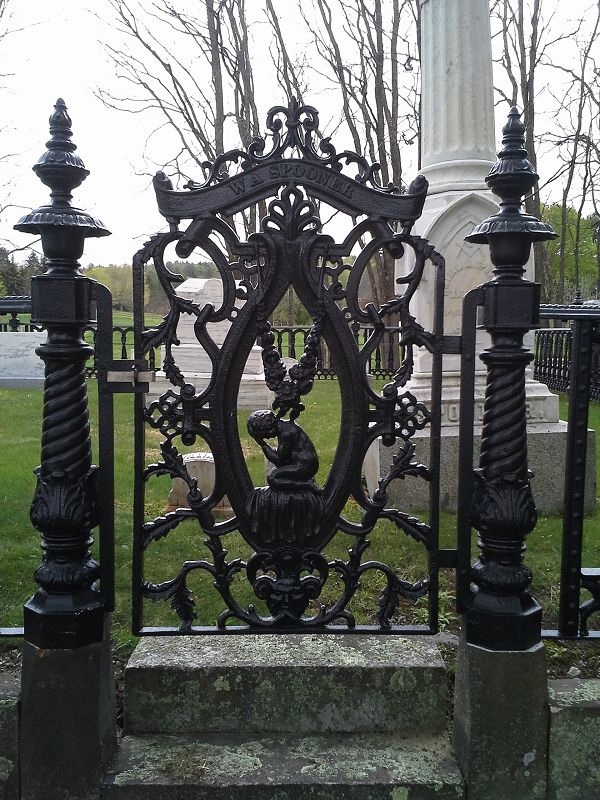Sunnyside Cemetery
Winner, New Hampshire Preservation Alliance 2015 Achievement Award
 In late 2012, we were asked to evaluate a pair of adjacent 19th century cast iron cemetery fences for possible restoration. The project was staged over several phases and two years. The town of Sugar Hill, New Hampshire displayed great patience and commitment to completing the restoration, and doing it well. All salvageable parts were repaired, and missing parts sent to the foundry for recasting, using the original parts as patterns. Extensive ground and stone work was done to provide a stable foundation for the restored fence. The reassembly of panels and posts was performed using traditional, mechanical fastenings, and all groundwork was done by hand, so as not to disturb the surrounding cemetery plots and grounds.
In late 2012, we were asked to evaluate a pair of adjacent 19th century cast iron cemetery fences for possible restoration. The project was staged over several phases and two years. The town of Sugar Hill, New Hampshire displayed great patience and commitment to completing the restoration, and doing it well. All salvageable parts were repaired, and missing parts sent to the foundry for recasting, using the original parts as patterns. Extensive ground and stone work was done to provide a stable foundation for the restored fence. The reassembly of panels and posts was performed using traditional, mechanical fastenings, and all groundwork was done by hand, so as not to disturb the surrounding cemetery plots and grounds.
The first plot was in grave danger of sliding off its footings. Stabliizing this fence and preventing further damage became our first priority.The gates on this plot were unique, as each of the gates had a custom-cast nameplate across the top. The gates themselves were stunning, and the potential was evident.
The second plot was in worse shape, but was far more stable. Missing parts had been safely collected and stored by the cemetery sexton. Tree damage was an issue.
The compromised footings are evident, as are the structural problems. Some parts were literally bring held together with twine and baling wire.
The granite was reset for each plot. The front section of the first plot was badly displaced, and required complete removal and reset. The footings for the rear of the plot were repaired and reset. Drainage improvements were added to minimize further heaving.
The second plot had extensive damage to the granite footings. Most were broken, some beyond repair. The posts were first removed from the ground for evaluation, and sorted for repair or replacement. In many cases, footings could be salvaged by removing enough material to achieve a flat, usable surface, provided that there remained adequate length to provide proper support. The posts were then reset. Posts too badly damaged for repair were replaced with new granite cut to match the existing posts.
After the groundwork and ironwork restoration, the fences were reinstalled. We first set the posts, ensuring that they were straight and that each post was level and secure on its footing. The posts are comprised of several parts that, when properly assembled, give the fence most of its structural integrity.
Once the posts were set, straight, and level, it was time to begin adding the panels. Each panel had been numbered for identification purposes when the fence was dismantled, as they were all slightly different lengths. Each panel was topped by a cast iron cap rail. This cap rail is not only decorative, it assists in maintaining the structure of the fence by tying together the panels and posts.
Restored fences. The front line of both fences has been returned to its original straight line, as have the side and rear.
The restored gates on the first plot finally display the hidden beauty from the before photos.
This lamb-and-willow gate was lost, and reproduced by the foundry using the matching gate (opposite side) as a pattern.
The most important factor in a large-scale cast iron restoration of this type is the commitment of the client to a good result. In this case, the town and cemetery committee were motivated to do the job properly, and were willing to commit to staging the project over several years. Additionally, the preservation actions of the cemetery sexton likely prevented the eventual loss of one or both fences. The town demonstrated extraordinary dedication to the preservation and restoration of these fences, and committed completely to the restoration and repair process.

